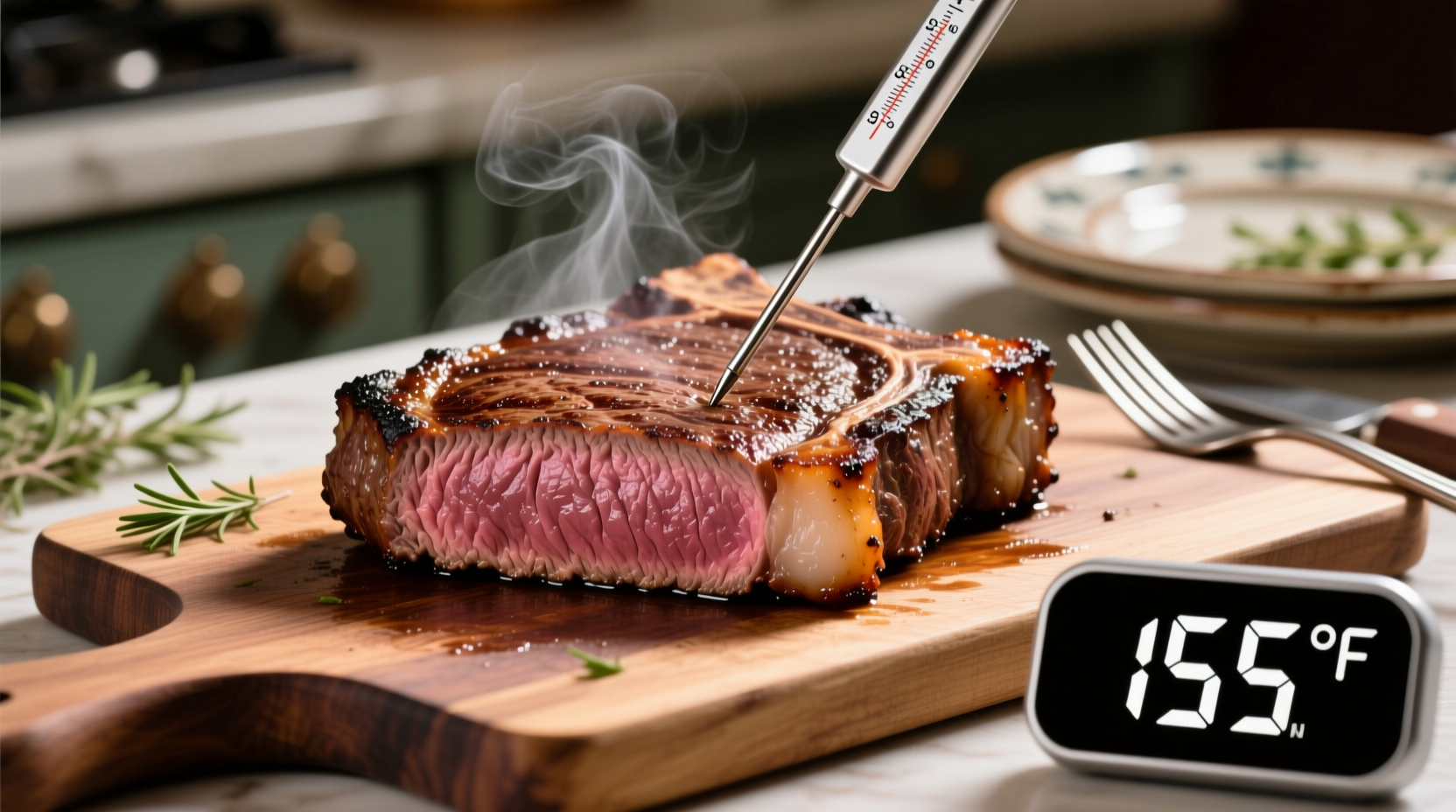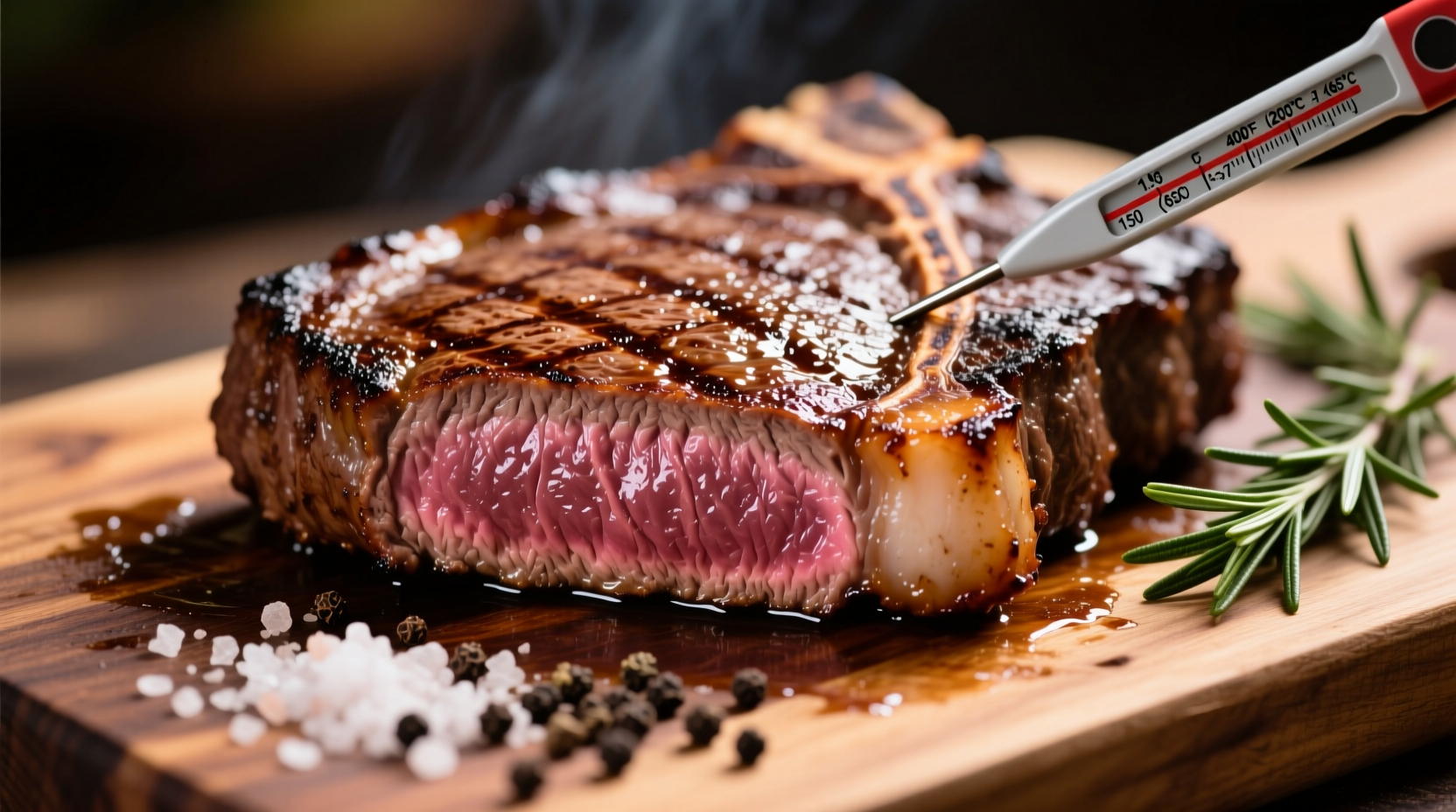Getting the perfect medium well steak requires precise timing and temperature control. Many home cooks struggle with inconsistent results because they rely solely on cooking time without considering critical variables like steak thickness, starting temperature, and cooking method. This guide provides science-backed techniques used by professional chefs to achieve restaurant-quality medium well steak every time.
What Defines Medium Well Steak?
Medium well steak features a warm brown exterior with only a hint of pink in the very center. The internal temperature should reach 150-160°F (65-71°C), causing most fat to render while maintaining some juiciness. Unlike well-done steak, medium well retains subtle tenderness when properly cooked.
| Steak Thickness | Grill Time (per side) | Pan Time (per side) | Oven Time (after sear) |
|---|---|---|---|
| ¾ inch | 3-4 minutes | 3-4 minutes | N/A |
| 1 inch | 4-5 minutes | 4-5 minutes | 3-5 minutes |
| 1½ inches | 6-7 minutes | 5-6 minutes | 6-8 minutes |
| 2 inches | 8-10 minutes | 7-8 minutes | 10-12 minutes |
Why Cooking Time Alone Isn't Enough
According to USDA Food Safety and Inspection Service guidelines, visual cues and timing alone can't guarantee proper doneness. The only reliable method is using an instant-read thermometer. Steak continues cooking after removal from heat due to residual heat transfer—a phenomenon called carryover cooking. During the essential 5-10 minute resting period, internal temperature typically rises 5-10°F.

Step-by-Step Medium Well Steak Guide
Preparation Essentials
Remove steak from refrigerator 30-60 minutes before cooking to bring to room temperature. This prevents uneven cooking. Pat the surface completely dry—moisture creates steam instead of searing. Season generously with coarse salt and freshly ground pepper.
Cooking Methods Compared
Cast Iron Skillet: Heat to smoking point with high-smoke point oil (avocado or grapeseed). Sear steak without moving for proper crust development. For 1-inch cuts, cook 4-5 minutes per side, basting with butter and aromatics during the final 2 minutes.
Grill Method: Use two-zone fire setup. Sear over direct high heat (450-500°F) for 3-4 minutes per side, then move to indirect heat until reaching target temperature. This prevents exterior charring before interior cooks.
Reverse Sear Technique: For thicker cuts (1½+ inches), start in 275°F oven until internal temperature reaches 110-120°F, then finish with high-heat sear. This method provides exceptional control for medium well doneness.
Avoiding Common Medium Well Mistakes
Many home cooks overcook medium well steak by:
- Poking or pressing the steak (releases precious juices)
- Cutting too soon (lose up to 40% of juices)
- Using low cooking temperatures (steams instead of sears)
- Ignoring carryover cooking (overshoots target temperature)
Food safety experts at the USDA Meat and Poultry Hotline confirm that while medium well approaches well-done temperatures, proper resting time allows juices to redistribute, preventing the dryness typically associated with higher doneness levels. The critical window for medium well is maintaining 150-160°F—exceeding 160°F typically results in well-done texture.
Temperature Verification: The Non-Negotiable Step
Insert an instant-read thermometer into the thickest part of the steak, avoiding bone or fat. For accuracy:
- Check multiple spots in thicker cuts
- Remove steak 5°F below target (145°F for medium well)
- Allow 5-10 minutes resting before serving
Thermometer use isn't just recommended—it's essential for food safety and quality. America's Test Kitchen research shows visual doneness indicators are accurate only 38% of the time, while thermometer use achieves 95% accuracy.
Perfect Pairings for Medium Well Steak
Medium well's reduced marbling benefits from complementary elements:
- Compound butters with herbs or blue cheese
- Red wine pan sauces with shallots and thyme
- Roasted mushrooms that add umami depth
- Acidic sides like chimichurri to cut through richness
FAQs: Medium Well Steak Cooking
Frequently Asked Questions
How long to cook 1.5 inch steak medium well?
For a 1.5-inch thick steak, cook 6-7 minutes per side on high heat. Use the thermometer method—remove at 145°F and rest 10 minutes. Total cooking time varies significantly based on starting temperature and cooking method.
Why is my medium well steak always dry?
Dryness typically results from exceeding 160°F internal temperature, insufficient resting time, or using lean cuts not suited for medium well. Choose well-marbled cuts like ribeye or strip steak, remove at 145°F, and rest 10 minutes covered loosely with foil.
Can I cook medium well steak in the oven?
Yes—use the reverse sear method for best results. Bake at 275°F until internal temperature reaches 110-120°F (about 45-60 minutes for 1-inch steak), then sear in smoking hot pan for 60-90 seconds per side. This technique provides superior control for medium well doneness.
Does medium well steak need to rest?
Essential resting time allows juices to redistribute. For medium well steak, rest 5-10 minutes (longer for thicker cuts). Cutting too soon releases up to 40% of the juices, resulting in dry meat despite proper cooking temperature.











 浙公网安备
33010002000092号
浙公网安备
33010002000092号 浙B2-20120091-4
浙B2-20120091-4